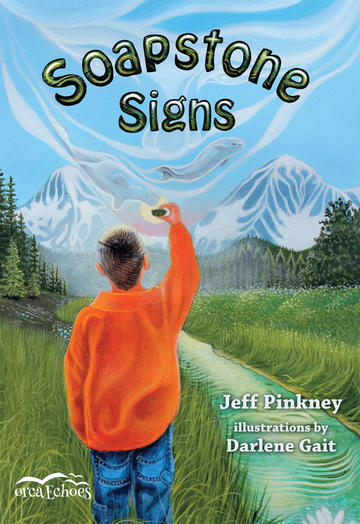One spring, a nine-year-old Cree boy is visited by a master soapstone carver named Lindy, who gives him four pieces of soapstone. The primary secret to carving, the boy learns, is recognizing that each piece of soapstone already holds its true form inside. Lindy teaches the boy to listen to the soapstone and look to the world around him for signs as to what to carve. As the seasons change, the young boy’s experiences lend him opportunities to develop his carving skills and become attuned to the signs around him. He eagerly awaits the following spring, which will bring Lindy’s return and a chance to show off his carvings.
- Age:
- 6 to 8
- Grade:
- 1 to 3
- Reading age:
- 6 to 8
- Commended, CCBC Best Books starred selection
"Pinkney's] first work of fiction will be of value to young readers who are interested in learning about the rites of passage First Nations youngsters experience as they grow older. Each of the four chapters, one for each season, can stand on its own as a self-contained story, but each leads easily into another, making the book accessible for readers who are new to chapter books...Complementing Pinkney’s text are striking black and white illustrations by Darlene Gait, an internationally recognized First Nations artist. The pictures work harmoniously in breaking up the text in each chapter and provide support for the story without being distracting...An enjoyable read for young readers who are exploring first chapter books."
"The book vicariously teaches the reader much about life in a Northern Cree community. Cree words for food and animals are introduced naturally in context, and the events of the story embed native values and teaching traditions."
Buy this book at:
Buy the e-book:
Annotations
Soapstone Signs
One spring, a nine-year-old Cree boy is visited by a master soapstone carver named Lindy, who gives him four pieces of soapstone. The primary secret to carving, the boy learns, is recognizing that each piece of soapstone already holds its true form inside. Lindy teaches the boy to listen to the soapstone and look to the world around him for signs as to what to carve.
This chapter book pays tribute to the craft of soapstone carving. The book can be shared when studying First Nations culture and can be a springboard into more in-depth learning about this art form. It can also lead children to consider creating their own sculptures using a variety of media.
Author available for class visits.
Source: Association of Canadian Publishers. Top Grade Selection 2016.





